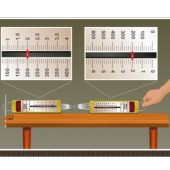If they're allowed to expand, the distance will add -- yes -- but the force will remain the same in the fixture.
I guess this is the part I’m having an issue with.. to me it seems the force is more the more cells added, not compounding but still more for each cell added.. the psi experienced by each cell will remain relatively the same only rising by a few psi as the SOC increases due to expansion force.. but the psi rising slightly more so in a 16cell rigid/fixed pack vs a 4 cell pack..
if 16 cells expand and the spring deflect by x amount, then there’s that amount of force from expansion that made the spring deflect x amount. Now if you add another cell, so 17 cells and those 17 cells expand then the same spring will deflect slightly more due to more cells expanding.. that means there’s more force on the spring, which created more pressure at the end plates to make the springs deflect further.
Yes once x amount of psi is applied to the end plates then expansion of16 cells can be all but stopped, but that doesn’t stop the fact that there’s more force applied to the end plates to prevent the expansion in a rigid fixture than if there was only 4 cells.
With springs the springs would have to be stronger or tightened further to stop the expansion force in a 16 cell setup apposed to a 4 cell setup.. and I think you are seeing that with your 16 cells in a row. At the pounds of force you are using you are still seeing quite a bit of expansion, but I’d guarantee if you used that same pounds of force on a 4 cell pack there wouldn’t be nowhere near the expansion PER CELL. Because that amount of pounds of force can keep 4 cells from expanding but can’t be enough to stop 16 cells expansion force.. yes as You and I and others have said it’s not 4 times more force but 16 cells have more expanding force than 4 cells.. or at least so far I haven’t been convinced otherwise.
Yes if the same x amount of psi could be kept in a 16 cell rig as a 4 cell rig then yes the expansion of each cell would stay the same. However my understanding is that it will take more force from springs or heavier duty rigid inclosure to keep that same psi within the rig in a 16 cell pack vs a 4 cell or 1 cell pack.
I think that’s true for the same reasons that a longer piece of threaded rod would stretch more than a shorter piece. There’s more expansion force from more cells... yes the threaded rid is stretching simply because the rod it longer but it wouldn’t stretch more than I shorter rod without it trying to hold together more cells.
If all of this isn’t true then why do you use springs and why does anyone use springs. Why doesn’t everyone just compress the hell outa 16 cells just like they do one cell in the data sheet. I mean I’ll do it. I won’t use the springs and rigid/fix 19cells like it’s one cell in the data sheet.. but I just can’t see how anyone would think that’s ok to do. How anyone’s thinks that 4 cells only exert as much linear expansion force as 16+ cells.. common logic says to me that I could keep one cell compressed (if possible) in my hands easier than 2 cells and 2 cells easier than 3 cells etc etc... yeah it wouldn’t be twice as hard or 3 times as hard but still harder to do with each cell added...
When someone is thinking about compress or not,, are they really supposed to think they only need to account for the expansion force of one cell even if they have say 100cells in a row?




